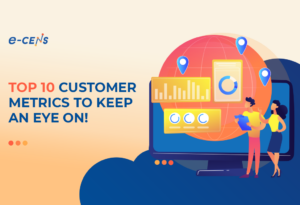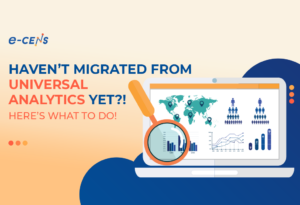Long gone (or should be) are the days where important decisions and insight come by way of the HiPPO method. You know, decisions that just default to the Highest Paid Person’s Opinion (HiPPO). This is typically the default when there is no data to back up alternative ideas.
Fortunately, things have changed. Data-driven organizations are positioning employees at all levels to have their opinions heard and to influence better decision outcomes because of the access to data and the story it tells.
Leaders are being challenged more than ever to put emphasis and attention on the practice of data analytics for marketing optimization and beyond. Data is not a total replacement for executive intuition and opinion (so HiPPOs do not fear), but data is the fuel to reach informed insights faster and with greater confidence, not to mention stir up more important business questions.
The responsibility of leadership is to arrange for the resources that ensure quality and accurate data collection. If you are unsure or want to validate how trustworthy your data collection is, it is advised that an Analytics Audit be performed. This will cross-check missed best practices and reveal the common (or uncommon) hidden problems. Examples include double counting and collection of PII (personally identifiable information such as names, email addresses, etc) which are serious issues. It is a worthy endeavor to conduct an Audit every couple of years or when a lot has changed with your digital properties.
Key questions: Are we confident our data is clean and accurate? Can we trust it as our “source of truth”?
An Executive can lead their organization to be more data-informed by starting with the end in mind:
Famously coined in Stephen Covey’s 7 Habits book – “Begin with the end in mind.” This is a wise guideline for approaching your organization’s data practice – by demanding that your data informs how you’re delivering your company’s promise to the world.
What is your purpose as a company? Typically, look to your mission statement or your value proposition at the highest level. Alternatively, your division or department might have a focused mission statement or OKRs (objectives and key results) for its role within the greater enterprise. All efforts should be measured with that mission in mind. It’s your duty to your customers and stakeholders.
Key questions: How is this data helping us get better at delivering on our mission as an organization (as a department/as an analyst)? If not, what’s missing?
Dashboards & Reports: A beacon for your next decision or useless noise?
Your data and the analysis of it must be a guide on how to better attract and serve the RIGHT CUSTOMER the RIGHT VALUE at the RIGHT TIME in order for your company to be more successful.
Look at your reports. Are your executive or stakeholder or departmental reports indicating progress towards that mission, or are they just numbers feeding the HiPPO ego? Harsh, yes, but this is all too common. Common but poor digital marketing measurement examples are “# of website visitors last month”, “is our website coming up on the first page for xyz keyword”, last-click taking full credit for conversion attribution, and so on. These are meaningless on their own – without some perspective to other data points. It’s time to set up your measurement implementation so you can get insight on more meaningful questions with expanded context.
Key questions: “So what?” What are the implications of this information? Does it point to changes we need to make or experimentation ideas to try? Does it validate our approach? Did this report just waste my time or empower me? Is it feeding my ego or revealing a truth?
Give Data a seat at the table:
Collecting data is easy (mostly). Asking meaningful questions for the data to answer is hard. Imagine that “Data’ is a member of your staff. Does “Data” show up to meetings with important new insight and a plan of action for moving the organization forward? Expect more and ask more of “Data”. You must first facilitate success through good requirements gathering, strategy, and purposeful implementation so “Data” can be trusted.
Leaders must also ask everyone (not just data analysts) to be held accountable for data-inspired decisions that support your company’s mission – the “why” you exist. Now that customized and dynamic reporting is (or should be) more accessible at all levels of the organization, drive your people to act upon it so the pace of customer impact accelerates. This is a competitive advantage, that is… if the data can be trusted.
Quality data along with good business questions will clear a fast lane to better business decisions and action.
Key question: Is “Data” an active participant at all levels or our organization?
With data on your side and with support of a great Google Analytics & data engineering consulting partner (hint, hint), you can master how your organization measures your success as you strive for profitable delivery of your company mission… while avoiding the noise and the HiPPO in the way… even if that HiPPO is you!

This post was originally written by
Patricia Jordan-Hinojos
Sales Director, e-nor




